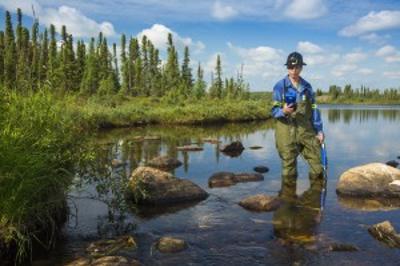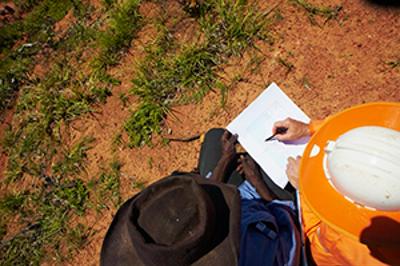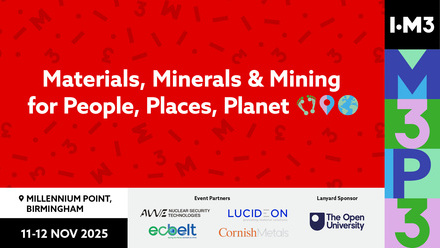The growth of green mining
With so-called green mining set to grow one third by 2024, Michael Schwartz takes a look at the industry determined to use sustainable practices.

There is no doubt that the attention of many mining organisations has been captured by the drive for sustainability, that is to say, technologies that can reduce water, power, fuel and maintenance toxicity, or which can generate fewer emissions. This impetus to avoid the unnecessary involvement of these elements is often described as green mining. Indeed, global compiler of reports on mining, MarketResearch.com, noted that in 2019, the green mining market was worth US$9bln. Further, it has predicted a major expansion to US$12.9bln by 2024.
This rise reflects the realisation by many mining companies that they will only gain increased orders if they display social responsibility and meet environmental standards. These practices can be adopted voluntarily or compulsorily.
MarketResearch highlighted reduced power consumption as a key contributor to green mining. In fact, mining operators have one incentive to lower energy usage – they have little control over the prices they pay for energy, so there is a financial incentive for using less energy in the first place.
On a more geographical basis, MarketResearch estimated that Europe is the fastest growing green mining market for its forecast period. Looking even more closely, Russia, ahead of Germany, Poland and Turkey, are Europe’s areas of increased growth. The next individual region is North America as government regulations are expected to provide growth opportunity.
Reinforcing the global nature of the drive for green mining, the report identifies nine leading players in the sector, with only one country, the UK, yielding two companies, being Rio Tinto and Anglo American. There are seven others from seven countries – Glencore (Switzerland), BHP (Australia), Vale (Brazil), Tata Steel (India), Jiangxi Copper Corporation (China), Dundee Precious (Canada) and Freeport-McMoRan (US).
Here, we sought views on green mining from three organisations:
- The Mining Association of Canada (MAC), which has been described as the voice of Canadian mining for 85 years
- Global mining operator, Rio Tinto, and
- Mining Suppliers Trade Association Canada (MSTA).
The part of recent legislation
‘Canadian mining companies operate in more than 100 countries around the world and the industry is one of the few sectors of the Canadian economy that can call itself a global leader,’ said MAC Communications Director, Cynthia Waldmeier. ‘Legislation in host countries is obviously a factor when it comes to determining where companies choose to conduct their business. That said, legislation in Canada itself has had a major impact on the mining sector.’
Waldmeier then zeroed in on the country, which she said has a complicated regulatory framework. ‘Canada is a confederation and provinces hold the primary jurisdiction and are the primary regulator of mining. Each one has a unique approach to assessing and permitting mining projects. Most mining projects are also subject to federal environmental assessment and some need additional federal approvals.
‘This diversity of approval processes across Canada complicates drawing conclusions about timeliness of process since no two projects have the same experience. The federal government has recently passed new federal assessment legislation, the Impact Assessment Act which, if well implemented, offers hope of improved coordination with provinces and within the federal government.’
Setting the scene for his company’s worldwide commitments, Rio Tinto Principal Advisor Media Relations, David Outhwaite, said, ‘We see our environmental obligations as relevant to our entire business, regardless of which country. We do not have different standards depending on where we are operating – they are universal.
‘Green mining covers most things. We define it in terms of having a sustainable business and it is something that we take very seriously across the Rio Tinto group. We have global standards and practices that our individual businesses need to operate to. Of course, every commodity, every operation and every country faces its own unique challenges and how they will tackle them, but all must adhere to our global standards.
‘We are committed to understanding these environments and mitigating the impact our operations can have on them, from the very beginning to the end of an operation’s life. This means not only taking care to mitigate any adverse impacts, but also ensuring that we work alongside the local communities whose lives and livelihoods rely upon them. We implement strict internal standards and practices in line with, and sometimes going beyond, local and international regulations.

‘For example, our environmental standards require all of our sites to involve local communities in monitoring activities and to share performance with stakeholders on a regular basis. We believe it is important to be open and transparent, so we report externally on our greenhouse gas and other air emissions, waste and tailings, along with our group water stewardship practices.’
MSTA’s point of view as to whether recent legislation had influenced its members was summarised by Managing Director Ryan McEachern, who said, ‘Not to our knowledge. That said, any changes that impact mining companies in a financial or commercial manner would impact the upstream supply chain.’
Corporate social responsibility
Waldmeier commented on MAC members’ commitment to CSR, pointing to the Towards Sustainable Mining (TSM) programme, which Canadian mines have been implementing for 15 years, being mandatory for members’ Canadian operations. Specifically, she noted companies’ annual requirements to assess, publicly report and verify their facilities’ performance. This is required across several critical environmental and social areas, including protocols focused on tailings management, water stewardship, indigenous and community relationships, safety and health, biodiversity conservation, crisis management, energy use and greenhouse gas emissions management, and preventing child and forced labour.
’Many MAC members also apply TSM at their international operations, and now other national mining associations are adopting and implementing TSM in their countries. In efforts to encourage responsible mining globally, MAC freely shares TSM with any country interested in promoting mining sustainably,’ she said. ‘To date, mining associations in Finland, Argentina, Botswana, the Philippines, Spain and Brazil have adopted TSM, while many others have also expressed interest in the programme, including most recently Norway’s mining association which has expressed its intention to adopt TSM this year.’
Outhwaite echoed this position for Rio, and added, ‘We see ourselves as long-term stewards of natural resources including land and water, and continually look for ways to improve local natural resource management practices and contribute to the conservation of sensitive ecosystems. We have robust standards that clearly articulate what is required from our sites in terms of biodiversity and ecosystem services management, emissions control and waste management. This ensures that our sites act as responsible stewards of the lands and waters where we operate. For example, in Australia, we are working with indigenous people to rehabilitate land using ancient seeds.’
Rio Tinto’s achievements include reducing emissions intensity by nearly 30% since 2008, and using low-carbon renewable energy for 71% of all of its electricity consumption. It is also the only major mining company to offer a fossil-fuel-free portfolio.
Education and training
McEachern posited a distinction between mining companies and their suppliers, namely that the ‘education and training of local mining workforces is more related to the mining companies’. However, many of these suppliers provide the solutions to the firms interested in clean technology or green mining needs.
Education and training are crucial for MAC, in that under its TSM initiative there are many commitments in water stewardship, biodiversity conservation and energy use, and in the protocols governing greenhouse gas emissions management. The assignment of clear responsibilities and accountabilities to designated employees, as well as providing awareness training to employees – with additional training for key personnel responsible on each aspect – are essential.
For Waldmeier, there are also ‘requirements to communicate stewardship commitments to employees, contractors and stakeholders. All three protocols also call upon mining operations to partner with local stakeholders on biodiversity, water stewardship and climate change initiatives at the mine or in the surrounding region’.
Is green being forced on the industry?
According to Outhwaite, customers increasingly expect a supplier to be able to demonstrate that they have high sustainability standards.
‘Our ELYSIS joint venture with Alcoa is working to commercialise by 2024 a breakthrough technology that eliminates all direct greenhouse gases from the traditional aluminium smelting process, instead producing pure oxygen. This is supported by Apple, which is looking at ways to reduce the environmental impact of the products that go into their iPhones and computers,’ he said.
Similarly, Rio Tinto’s suppliers must sign up to the firm’s The Way We Work business practices, which include environmental commitments.
While McEachern said, ‘We are seeing the larger mining houses as first movers which we started to see in 2012, and then really get traction in 2015. The medium-sized companies are also getting engaged, but it is less common in the junior mining space. There the value proposition is geared toward the traditional investor, such as low-cost and operational excellence before any CSR policy objectives.’
Regarding shareholders, a lot of money is being spent on looking for more responsible opportunities. The MSTA reported that this may be in the trillions, with its members often hearing that their solutions can help mining companies with CSR.
Then there is MAC, of which it said the members are, ‘playing a prominent role in the responsible sourcing movement, specifically in developing responsible supply chains for metals and minerals. MAC works closely with ResponsibleSteel and other partners to ensure the TSM standard is recognised in emerging responsible supply chains. Several TSM protocols also include criteria that extend to mining contractors’.
The goal for MAC members participating in TSM is to feed into responsible supply chains as they emerge, e.g. ResponsibleSteel, and the Responsible Jewelry Council (RJC), which ensures the mined metals and minerals in jewellery have been sourced sustainably and ethically.
The last words on green mining are from McEachern, who said, ‘We see three main trends in the mining industry out of Canada but also globally. The industry is looking for solutions to reduce water and energy intensities as well as environmental, including carbon, footprints. Any mining supplier that can show a clear line of sight on how their solution or service can achieve one or all three of these objectives, that company will have the ear of the mining companies with this vision.’







